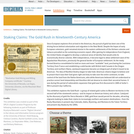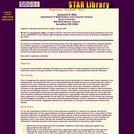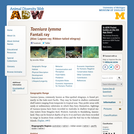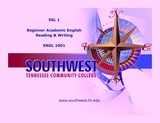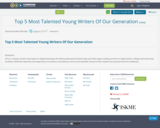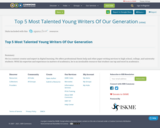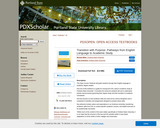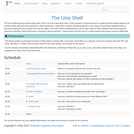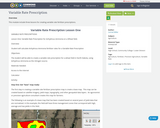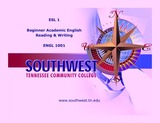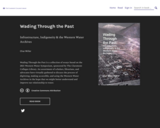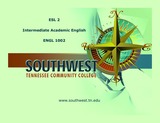
In the fall of 2021, students in Pseudoscience courses started creating this open educational resource (OER), which has been built upon by subsequent classes. Our intention is to create a free textbook for this course that might also be used by students of critical thinking elsewhere and of all ages, whether in a classroom or not. Our growing, interactive textbook employs the Paul-Elder Model and other critical-thinking resources, and is freely available to all, learners and educators alike.
The topic of pseudoscience offers a rewarding way for students to learn the value of thinking critically, even as they get to argue things, like Flat Earth Theory and astrology, that may seem trivial at first. At a time when truth is understood as largely subjective, we have, not surprisingly, seen a resurgence in the popularity of pseudosciences and conspiracy theories, which many consider to hold significant truth value, just as valid as physical evidence. It is our aim here to demonstrate the reasoned analysis process — weighing truth, belief, opinion, and fact — so that others may be able to replicate this process and reason through their own questions about vaccines, extra-terrestrials, genetic modification, or the first people to arrive in the Americas.
- Subject:
- Arts and Humanities
- Philosophy
- Material Type:
- Textbook
- Provider:
- Coastal Carolina University
- Author:
- Abby Bedecker
- Ainsley Walter
- Allie Morgan
- Allison Draper
- Alyssa Morgan
- Amari Parlock
- Amelia Lovering
- Angelina Rice
- Anna Cook
- Annabel Poinsette
- Ariana Levitan
- Ashley Glusko
- Audrey Glore
- Austin Williams
- Aysia Walton
- Benjamin Schutt
- Brandon Decker
- Brielle Normandin
- Briley Hitt
- Brogan Piziak
- Caitlyn Flemmer
- Cameron Butler
- Carina Witt
- Carter Matthews
- Casey Higgins
- Cecilia Beverly
- Celia Lemieux
- Celidgh Pikul
- Coastal Carolina University
- Codie McDonald
- Cody Tudor
- Colin Miller
- Cooper Levasseur
- Corabella Dieguez
- Danielle Bridger
- Daviana Williams
- David Truhe
- Elissa Mueller
- Elizabeth Middleton
- Ella Stevens
- Emma Jaggers
- Gianna Curto
- Giovanna Costantiello
- Gray Serviss
- Hannah Higgins
- Isabella Mezzenga
- Isabella Wilson
- Jack Cowell
- Jada Taylor
- Jada Watson
- James Deloach
- Jameson Vinette
- Jasmyn Greenwood
- Jaycie Miller
- Jenna Monroe
- Jenna Pincus
- Jerry White
- Jordan Chaney
- Jordan Kress
- Josie Marts
- Julia Contract
- Julia Gustafson
- Kaia Divisconti
- Karlee Morschauser
- Kathryn Mullarkey
- Kayla Raimondi
- Kelise Davis
- Kellen Thompson
- Kenzie Carolan
- Kimora White
- Klea Hoxha
- Kristin Brickner
- Kyle Kaminsky
- Kylie Sands
- Lea Cifelli
- Lea Shuey
- Leah Hargis
- Lillian Stewart
- Logan Friddle
- Loralei Wolf
- Luke Dykema
- Mackenzie Jurain
- Madelyn Brown
- Madison Chemerov
- Madison Conway
- Madison Mortier
- Makenzie Coore
- Maria Dixon
- Marissa Colonna
- Matthew Clemens
- Matthew O’Hara
- Megan Quinn
- Miles Tarullo
- Mitchell Davies
- Morgan Polk
- Morgan Scales
- Natalie Smith
- Nicole Kosco
- Noah Wormald
- Nora Dover
- Olivia Berkut
- Paige Cyr
- Payton Wolfe
- Peyton Kinavey
- Rachel Littke
- Rebecca Padgett
- Rebekah Spiegel
- Rilea Stow
- Riley Forrester
- Riley Houdeshell
- Ryan Albert
- Samantha MacMillan
- Samantha Noble
- Sara Rich
- Savannah Downey
- Sela Lomascolo
- Shannon Nolan
- Skye McNamee
- Spencer Smith
- Sydney Glass
- Sydney Hayes
- TaNyla Clinton
- Taven Nichols
- Tessa Foster
- Thomas Stewart
- Tyler Benson
- William Kitsos
- Ywomie Mota
- Zachary Williams
- Zaviyonna Benthall-Lewis
- Date Added:
- 08/19/2024

